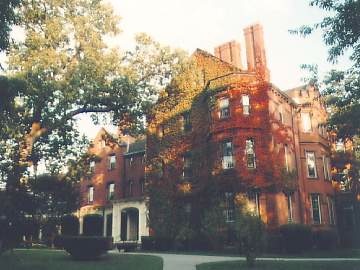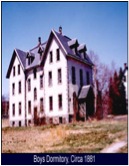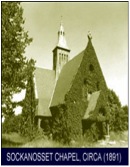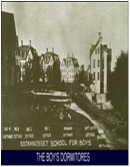Home
Rhode
Island
Number of Victims
This state did not have a compulsory sterilization law, and there are
no records of anyone being sterilized against his/her will
(Largent, p.72).
Passage of Law(s)
In 1974 it became legal, for both doctors and patients, to be
voluntarily sterilized. However, it was a felony for a doctor to
sterilize anyone under 18 years old unless it was necessary to preserve
his or her life or health (Bush, p. 115).
Process of the law
It is difficult to find information about sterilization and eugenic
laws in Rhode Island, mainly due to the fact that they never kept
records of their legislative session (Caron, p. 38). Though
several eugenic sterilization laws were presented and were debated
twice by legislators, they never passed in Rhode
Island. Legislators claimed that sterilization was not a matter that
could be
settled on a statewide level; it was something to be decided between
the patient and physician only (Caron, p. 12).
Precipitating Factors
In the mid 1800’s the number of children native Rhode Islanders were
having was declining, while the number of children immigrants were
having was rising (Caron, p. 19).
Frequently Rhode Island differed from the national norm when it
came to
enacting laws and regulations, even with other New England States Rhode
Island often had a different stance on matters (Caron, p. 12). In the
early 19th century Rhode Island enacted a law prohibiting abortion and
only held
the male responsible for the crime, making it one of only two states to
exempt women from charges relating to unlawful implementation of
abortion (Caron, p. 12). Contrary to Rhode Island's strict policy on
abortion, Rhode Island was the only New England state that made the use
of contraceptives legal (Caron, p. 12). Rhode Island also opened a
birth control clinic to cater to the needs of its citizens, which was
staffed with respectable male doctors contrary to other freestanding
birth control clinics that were staffed mostly with female physicians
(Caron, p. 12).
Catholicism was the
major denomination in urban areas of the 1850s, however, this lead
only to the increase of the Know-nothing-Party (Caron, p. 36). The Know
nothing party was anti-Catholic, which is probably the reason that
abortion was then made legal, for doctors and women, in the state. By
the 1860s they had removed all antiabortion laws (Caron, p. 24) and by
the 20th century, even with the change to Catholicism as the main
religion, Rhode Island was the only state in New England that did not
ban the distribution of birth control (Caron, p. 12).
Eugenic sterilization laws that failed to pass the Rhode Island
legislature may have also been influenced by the work of Charles
Davenport who in 1912 gave a lecture entitled "The Importance of
Field-Work for the State of Rhode Island"(Bix, p. 632). Davenport
argued that Rhode Island could benefit from a task force of
field-workers to identify individuals that may be draining the states
resources.
Marriage Restrictions
By 1940 Rhode Island had instituted a statute prohibiting marriage of
mentally incompetent people, and that any marriage of an incompetent
person would be a violation of the statute, and the marriage would
become void (Schuler, p. 303). Rhode Island used the terms
“idiots”, “Imbeciles”, and “feebleminded” to describe people who were
restricted from marriage, though the definition of these terms was
never defined (Schuler, p. 305). A marriage of an insane person or one
unable to understand the nature of a marriage contract would also be
considered void (Schuler, p. 312), though no attempt to define “insane”
was made.
Groups Targeted and Victimized
Western states had prohibited marriages between white natives and Asian
immigrants, and eventually imbeciles, epileptics, and feebleminded
women under 45 were also prohibited from getting married (Caron, p.
53). Rhode Island targeted idiots, imbeciles and feebleminded persons,
as well as poor Irish people (Dowbiggin 1997, p. 58). Dowbiggin (1997)
states that "Rhode Island's mental health care system officially
defined mental illness as little other than a form of combined
dependence and deviance" (p. 59). Rhode Island's "system of dual care"
which was developed to support both the curably and incurably insane,
was based primarily on factors unrelated to health. These factors,
including wealth, nationality, and social standing helped to identify
those patients that would receive treatment and those that were deemed
incurable (Dowbiggin 1997, p. 58).
Noted Hospitals and Institutions
Though no sterilizations occurred at these hospitals and institutions,
they are notable as enforcing eugenic ideals of segregating the “unfit”
from normal society.
History of Butler Hospital
 Picture
of Butler Hospital in Providence. Source:
http://www.rootsweb.ancestry.com/~asylums/butler_rh/index.html
Picture
of Butler Hospital in Providence. Source:
http://www.rootsweb.ancestry.com/~asylums/butler_rh/index.html
Butler Hospital opened in 1847
in
Providence (Dowbiggin 1997, p. 49).
Due to state policies regarding the insane, many people thought this
was a great place to work (Dowbiggin 1997, p. 58). For psychiatrists,
Butler, a privately owned hospital established by several wealthy
philathropists, offered relief from the financial pressures at
government funded institutions. Butlers also was notable for it's
system of care for both the curable and incurable patients. With the
spike in immigrants in the 1850s, especially the poor Irish, Butler
became
overcrowded and another hospital was needed. The formation of a
state-level facility was intended to relieve Butler of "the Insane
Poor" (Dowbiggin 1997, p. 59). Eventually problems with overcrowding
caused treatment quality at the state institution to diminish
exponentially, earning the facility a reputation of patient abuse. On
the other hand Butler nearly recruited wealthy potential clients by
advertising the luxury of it's segregated accomodations designed for
upper-class patients (Dowbiggin 1997, p. 61). Although Butler
tended to cater to wealthier patients, it also remained dependent on
donations from the surrounding community so it couldn't market itself
exclusively to the affluent. In order to retain it's status as a
charitable organization it was forced to continue to care for members
of the surrounding commuity even if they were incurable. Psychiatrist,
G. Alder Blumer, the medical superintendent at Butler viewed chronic
patients negatively not just because of their financial burden but also
because they took spaces that could otherwise be filled with "acute
cases" which urgently require treatment (Dowbiggin 1997, p. 62). Over
time Butler Hospital became even more focused on curing mental illness,
this in turn led to the realization in the early 1900s that one may
benefit from treatment at Butler even if an individual hadn't been
committed (Dowbiggin 1997, p. 63). Butler is also notable for being one
of the institutions visited by the famous reformer Dorothea Dix.
The Butler Hosptial continues to operate as a mental health facility in
Providence, Rhode Island. Although the role of Butler in the eugenic
movement in the United States is not mentioned on their website, they
do offer tours of the facility that explain the facility's history
(Butler Hosptial).
History of the Ladd School
 The Ladd School.
Source: http://www.artinruins.com/arch/?id=rip&pr=laddschool
The Ladd School.
Source: http://www.artinruins.com/arch/?id=rip&pr=laddschool
The Ladd School (Joseph H. Ladd Center) was built for the mentally
handicapped. Originally named the Rhode Island School for the
Feebleminded, and was opened in 1907. The school started as a colony,
where patients lived in small cottages and "worked in a rural setting
doing small chores, farming, and later making of clothes and household
items" as opposed to other institutional settings ("The Ladd School").
In 1909 an all girls dormitory was built on the grounds. At this time
the boy’s dormitory was completely full with a waiting list. The
school changed its name to the Exeter School in 1917 with the change in
public opinion about the term “feebleminded” being derogatory.
Dr. Joseph Ladd, for whom the school was eventually named, retired in
1956 "amidst a steady and growing controversy over his policies" (
Rhode Island Art in Ruins, "The
Ladd School"). In 1986 people tried to get the school to close because
of alleged abuse cases, and Rhode Island wanted to remove such
institutions from its mental health programs. The institution, however,
did not close until 1993 and has since been demolished. In 2000 plans
to redevelop the property initially suggested using the land for
business development. Despite several different plans proposed for the
land, voters in 2002 approved a bond for a state fire academy and state
police headquarters to be built on the
land.
Advocates in Action, a statewide self-advocacy organization, is in the
process of creating a documentary about the Ladd School entitled "The
Best Judgment: The Complex Legacy of the Joseph H. Ladd Center".
History of the Howard Reservation


 Photos
of the Boys Training School at Sockanosset. Available at
http://www.cranstonri.com/generalpage.php?page=112
Photos
of the Boys Training School at Sockanosset. Available at
http://www.cranstonri.com/generalpage.php?page=112
The Howard Reservation was home to the Boys Training School, which "was
Rhode Island's first attempt to provide statewide social services
through publicly supported and administered institutions" (City of
Cranston, "Historic
Locations: The Boys Training School"). The Howard
reservation signified a change in how people who were poor, mentally
ill, and criminal were treated. In 1866 the state Board of Charities
and Corrections was created with the main goal of establishing a “state
farm” with a house for criminals, a state asylum for the incurably
insane, and an almshouse ("Chapel View: former Sockanosset Boys
Training School"). The goals of this organization were to raise the
standard of living for the “unfit” and to remove the burden of caring
for the “unfit” from the greater society. This hospital was based
off of Blackwell’s island in NYC (Dowbiggin 1997, p. 58). With
the construction of this asylum came the philosophy of the asylum being
custodial rather than curative (Dowbiggin 1997, p. 59). It was
assumed that institutionalization would force the patients into a
controlled and organized environment where their every move could be
controlled and watched, and they would no longer face temptation from
the perils of normal society (Rhode Island Art in Ruins, "Chapel View:
former Sockanosset Boys
Training School"). The boys lived in cottages and worked on a farm
(which produced most of their food) and also learned useful trades,
such as blacksmith and carpentry. Due to a fire in the 1970’s a few of
the buildings were destroyed, but the chapel, industrial building and a
dorm remained and in the 2000’s these buildings were being refurbished
under a 65 million dollar project to build “a city within a city”
(
Rhode Island Art in Ruins, "Chapel View: former Sockanosset Boys
Training School").
Opposition
Many states failed to establish and keep sterilization laws due to
catholic opposition (Dowbiggin 2008, p. 77); however this was not the
case in Rhode Island. By the 20th century Catholicism had replaced the
Know-nothing party as the main denomination of Rhode Island, but the
church did not play a role in stopping eugenic laws. This is probably
due to the fact that Catholics spent more time fighting the state’s
stance on abortions since that concerned them more (Caron, p. 57). Even
though the church had a strong influence on the state, they were unable
to ban birth control, so it is unlikely that they would have been able
to stop eugenic laws, if the state had wanted to pursue them. However,
the catholic community was able to fight insurance companies so that
they would fully cover abortion only in life-endangering situations
(Caron, p. 239).
Opposition did occur when contraceptive clinics, which had the
ability
to perform sterilizations as well, opened and chose to serve all races
and ethnicities. The opposition did not get far because Rhode Island
provided everyone had a right to birth control (Caron, p. 100).
The Ladies Moral Reform Association of Rhode Island strongly opposed
abortion because it allowed men to "cloak their sins"and "invaded the
sanctuary of the home" (Caron, p. 36). Their group failed to influence
state reform but their opinions helped to perpetuate ideas of female
victimization by men, through their association of abortion and the
prevalence of male seducers (Caron, p. 36).
Bibliography
Bix, A. S. 1997. "Voices of Eugenics Field-Workers: 'Women's Work' in
Biology." Social Studies of Science,
27(4): 625-668.
Bush, D. 1983. "Fertility-Related State Laws Enacted in 1982." Family Planning Perspectives, 15(3):
111-116.
Butler Hospital. "Butler Bricks." Available at <http://www.butler.org/body.cfm?id=47>.
Caron, Simone M. 2008. Who Chooses?:
American Reproductive History Since 1830. Gainsville: University
of Florida Press.
City of Cranston, Rhode Island. "Historic Locations: The Boys Training
School at Sockanosset." Available at <http://www.cranstonri.com/generalpage.php?page=112>.
Dowbiggin, Ian. 1997. Keeping
America Sane: Psychiatry and Eugenics in
the United States and Canada, 1880-1940. Ithaca: Cornell
University
Press.
Dowbiggin, Ian. 2008. The
Sterilizaiton Movement and Global Fertility in the Twentieth Century.
Oxford: Oxford University Press.
Largent, Mark A. 2008. Breeding
Contempt: The History of Coerced
Sterilization in the United States. Piscataway: Rutgers Press.
Schuler, Ruth V. 1940. “Some Aspects of Eugenic Marriage Legislation
in the United States.” The Social
Service Review 14 (2): 301-316.
Rhode Island Art in Ruins. "Chapel View: former Sockanosset Boys
Training School." Available at <http://www.artinruins.com/arch/?id=redevelop&pr=sockanosset>.
Rhode Island Art in Ruins. "The Ladd School." Available at <http://www.artinruins.com/arch/?id=rip&pr=laddschool>.
 Picture
of Butler Hospital in Providence. Source:
http://www.rootsweb.ancestry.com/~asylums/butler_rh/index.html
Picture
of Butler Hospital in Providence. Source:
http://www.rootsweb.ancestry.com/~asylums/butler_rh/index.html The Ladd School.
Source: http://www.artinruins.com/arch/?id=rip&pr=laddschool
The Ladd School.
Source: http://www.artinruins.com/arch/?id=rip&pr=laddschool

 Photos
of the Boys Training School at Sockanosset. Available at
http://www.cranstonri.com/generalpage.php?page=112
Photos
of the Boys Training School at Sockanosset. Available at
http://www.cranstonri.com/generalpage.php?page=112